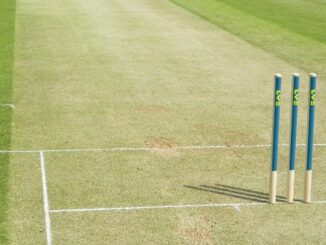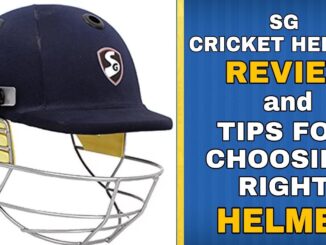
The time for trying things out is almost over. With the ICC Cricket World Cup 2015 a little over two weeks away now, fine-tuning is the need of the hour and towards this end, the warm-up games immediately before the tournament proper need to be taken very seriously.
When it comes to the faster bowlers, especially, it is essential that by the time India is done with its second practice game, against Afghanistan on February 10, it has hit top rhythm. Any flaws or faults, issues of confidence and form and injuries – all those things have to be sorted out in the next 15 days.
One of the things I can state from experience is that when the ICC Cricket World Cup 2015 mindset takes over, then the mind automatically starts to operate in such a way that injury recovery begins in the mind first before the body actually starts to heal. Once you put your heart and soul into preparation, then what might seem like miracles will start happening.
From India’s standpoint, it becomes crucial to identify what its strongest pace attack is.
Ishant Sharma hasn’t played for nearly a month now and that is not a good sign, but I am sure he will use whatever games remain between now and the start of India’s title defence against Pakistan in Adelaide to get back into match mode. The two most important things are training well and bowling a lot – there is no such thing as bowling enough on these pitches. Obviously, Ishant has played in Australia before and knows what to expect, but there really is no substitute for match time.
In many ways, it is a Catch-22 situation. The more you bowl, the better you become. But the body also needs rest, so you can’t bowl it to the ground. It’s how you strike that balance that becomes crucial. By the time the ICC Cricket World Cup comes around, you should have made sure that you are gripping the ball the way you like it, that the feel of the ball in the hand is both comfortable and satisfying.
Like I said earlier, it is extremely important for India to identify its frontline pace attack. At this time, Bhuvneshwar Kumar is a certainty, and given that Ishant is fit, he will be a shoo-in if he can find his line and length. The third seamer is then a toss-up between Mohammed Shami and Umesh Yadav. Bhuvneshwar will swing the ball, which is his great strength, while the others will get seam movement. What this means is that Bhuvneshwar apart, the others have to bowl just a yard shorter and place the onus on the batsman to play the cut and the pull from that indeterminate, uncomfortable length.
Given the technology at their disposal, it won’t take long for bowlers today to figure out what it is that will give them the best chance of being successful. It will help them understand what lengths to bowl to the premier batsmen in different teams, what their favourite scoring areas are, and what the best options are of getting them out. Technology won’t make you successful, but it will offer you the tools that, if you use judiciously, can help you embrace success. It is important that your preparations are impeccable. Things can go wrong on any given day, which happens in cricket. But that should not be because you have been tardy or lacklustre in doing your homework.
The faster bowlers have to go for the win. By that, I mean they have to look for wickets up front, not at being economical. Having two new balls per innings is a boon. The downside to that is that there won’t be too much reverse swing, but if you use the glaze in the first 10-12 overs to get conventional swing, you don’t have to bother about reverse. You have got to get the best out of the new ball, and if your quicker bowlers are doing a decent enough job, you don’t want to bring on the spinner until the 25thover.
After the 25th over, the ball won’t swing, either conventional or reverse. So, you can get caught in between as a bowler and become predictable. That’s why it is imperative to have a good first spell. The confidence that you get from a good first spell will then spill over to the second spell, but if you mess up your first spell, then things will only become tougher. If you bowl ordinarily with the new ball, you could end up looking at 340-350, and that is not the kind of total you want your batsmen chasing.
That’s also one of the things India’s bowlers will have to keep in mind – the fact that they will be up against quality pace bowling attacks early on, and, therefore, the realisation that they can’t expect their batsmen to bail them out time after time. The bowlers must not just think about their own individual figures, they have to think about what is a good score for their batsmen. You need to take a holistic approach and think of the nuances – where to bowl at specific batsmen, how to manage spells. Bowlers like Ishant, who have been around for a long time, have to take a macro-level view, they have to take greater responsibility. In fact, you need two or three bowlers in the side to do that, otherwise, it will be difficult for the captain to minimise the damage in the middle.
I have been asked a lot about death bowling, and all I can say is that there is no prescribed formula. It all depends on the way you have bowled early on. I personally hold the opinion that the best death bowling is to bowl at tail-enders. By that, I mean you pick up early wickets and ensure that you have done your job upfront. If you don’t strike early, death bowling can become extremely tough. With the introduction of two new balls, the onus is more on getting early wickets. Otherwise, and in the absence of reverse swing, the ball is in pretty good condition to travel long distances. Ideally, you will try to mix and match, bowl slower balls, yorkers and bouncers at the death, but if the opposition has wickets in hand, then good luck.
As a fast bowler, you have to allow the batsman to create chances for the bowler to take wickets. By that, I mean you have to make him play half-cocked, when he is at his most vulnerable. You can’t be too short, you can’t be too full, and as difficult as it might sound, it is not impossible because this can come from practice. What is important to remember is that these lengths vary from batsman to batsman. You have to customise that length according to the needs of the situation.
Every bowler has to have a plan for every batsman he bowls at. We had it going into the ICC Cricket World Cup 2003, so I see no reason why this Indian team won’t have it in 2015. The technology is available, it is important that the seniors lead the youngsters into using that technology sensibly.
Unless otherwise stated, PONIREVO and/or its licensors DO NOT own any intellectual property rights in the website and material on the website. Majority of the site’s content has been scraped and auto posted by a third party artificial intelligence program —– PONIREVO Creation Team.
Proudly WWW.PONIREVO.COM
by Md Ahmed



